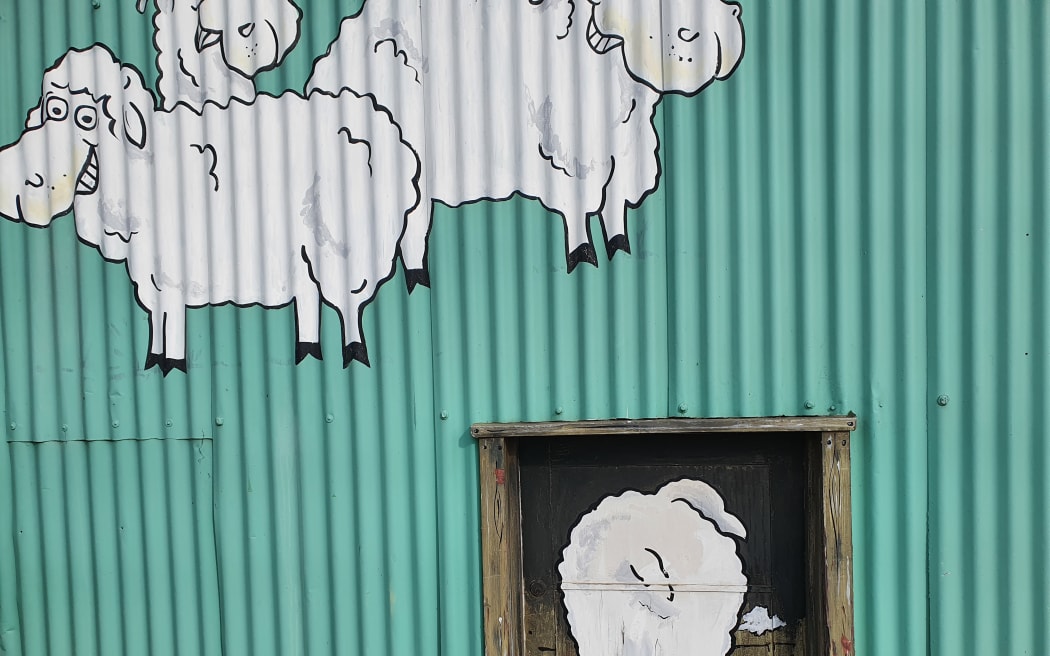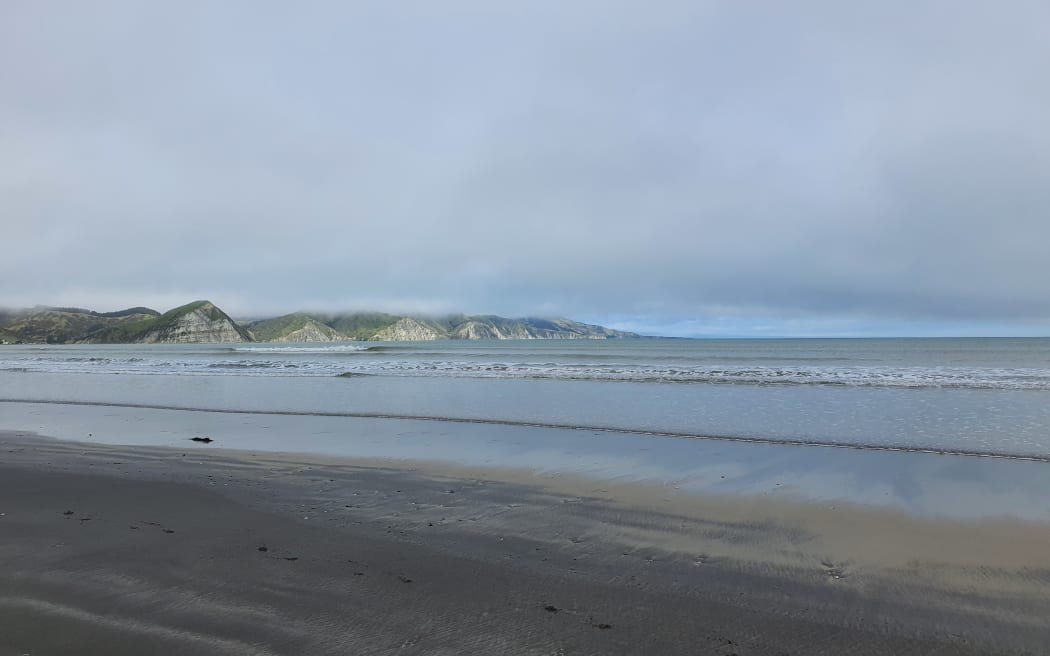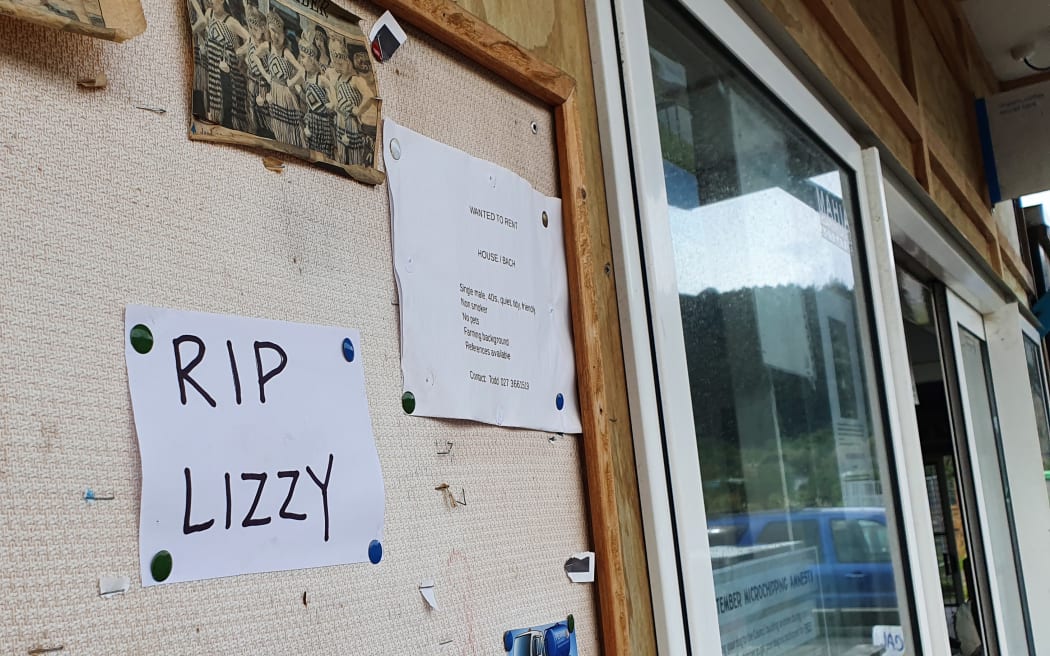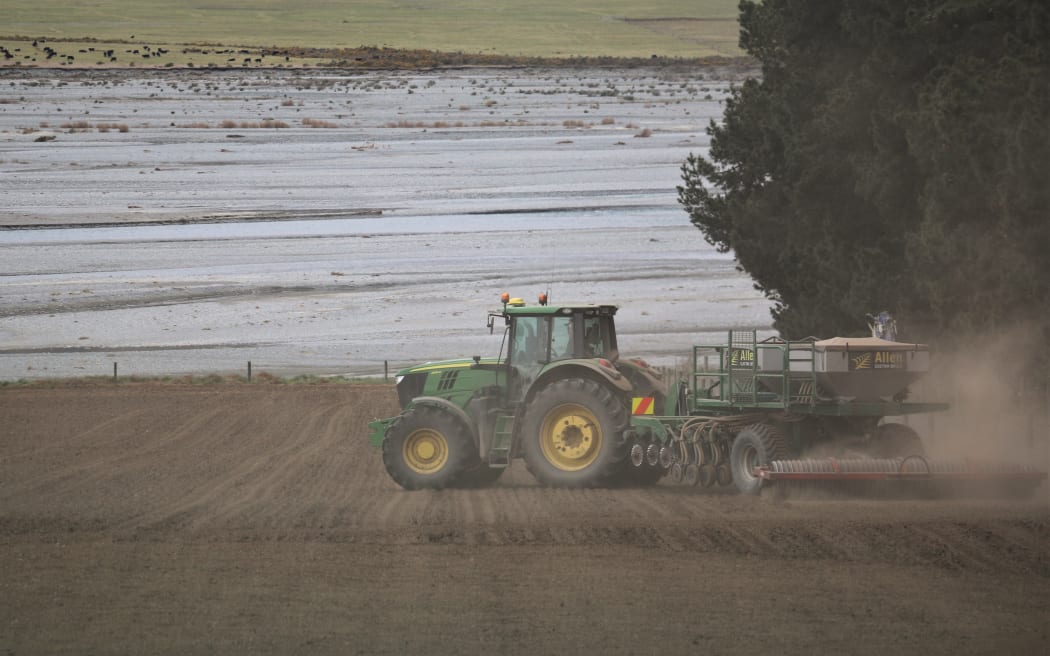
A mural in Napier Photo: RNZ/Sally Round
Thursday in Northland was a beautiful clear blue day of about 18 degrees. On farm there's still not a lot of spare pasture... things are just on the edge of taking off. The market for young cattle is strong with plenty of local buyers at sales. People are feeling quite positive with good schedule prices.
In South Auckland following a little rain at the start of the week, sunshine hours have increased, which has been good for spring growth. However, some crops are slow growing due to cool overnight air temperatures.
A wet and cool week in Waikato interspersed with spots of sunny warmth has slowed the start of the asparagus season. Fairly small volumes are being cut at present but that will ramp up as the days warm up.
The King Country town of Ōtorohanga is mourning the loss this week of Karam Haddad who owned and ran Haddad Menswear with his brother John for more than 50 years. You can buy all sorts of rural wear there from red band gumboots to stylish hats and black singlets and visiting their store was an event in itself. Karam who was in his 80s died following a car accident. Farmers here have started docking and beef herds are starting to calve. On a drive down to Taihape, one farmer says he's surprised how green farms are looking. Normally frosts would've really hammered pastures in this region.
In Bay of Plenty there are still many hectares of green kiwifruit vines to be pruned. The stop start weather conditions, on top of labour shortages are meaning it's a really late end for this important orchard task. Some pruners have headed off for other work because they're tired of the down time in the wet. Bud burst is underway in gold and red kiwifruit. It's looking good which is slightly unexpected after the warm winter. Vines normally need winter chilling to get good bud break.
It was moderately wet and cool earlier this week in Taranaki, improving towards the end of the week. Grass covers are moderate to tight but once there's a good week of weather pasture will really take off. There's more snow on Mount Taranaki this week than there has been all winter … the little ski field there hasn't been open this season.
On the East Coast a consultant says spring was there, he supposed. The clover is sort of coming through but soils got back to saturation point again this week after 90 millimetres of rain fell around Gisborne. It's been difficult for those trying to harvest citrus fruit and vegetables and hard for farmers to get stock eating all the available pasture and crops without soils pugging up. The schedule for beef has gone up as meat works try to entice farmers to sell stock, but with enough grass around they're holding onto animals to put more weight on them.

Māhia Beach Photo: RNZ/Sally Round
It's been one the wettest springs for a while in Hawke's Bay which makes it physically hard on farm as everything is sodden. It's good to head into spring with enough moisture but farmers are feeling they've had enough. Again as elsewhere pasture utilisation is poor with stock trampling the feed into the ground.
Wairarapa was wet during winter, now it's even wetter. Grass is growing a little but the farmer we spoke to said his farm was well off the pace from where he'd like it to be. It's challenging when things go wrong - it just makes it more difficult to cope. But some are feeling this weather pattern may suddenly turn around and within days it will be too dry because of strong winds. The local council is having to spend hundreds of thousands of dollars more than budgeted dealing with slips and slumping land damaging roads. It's still chilly and frost fans have been whirring in the vineyards.
In Horowhenua the large asparagus grower Tendertips cranked up its packhouse mid week with a very small offering of spears. The sector is hoping for a better season than last year when only a third of the crop nationally was harvested because Covid closed restaurants right through the peak of the season and that slashed demand. Over the past six months a marketing campaign has been developed singing the praises of the vegetable.
In the Nelson Tasman area flood-hit farmers are continuing with the wearying task of repairing fences and land. A farmer here said he's looking forward to not being so busy calving so he can get off farm and help those whose farms were damaged. Rye Valley farmers are getting grass seed onto silt-affected paddocks. A cold front passed through earlier in the week dropping snow on the ranges but in between these cold snaps the weather is warming up.

A tribute to the late Queen Elizabeth at a country store on the East Coast Photo: RNZ/Sally Round
Marlborough has had more frosts this week slowing up growth. Three weeks ago soils temperatures were good, but now they've dived back down under 10 degrees. Frost fans were on here too to protect the vines. Lower country sheep farmers are reporting good lamb survival with tailing just around the corner. Merino farmers in the high country are starting pre-lamb shearing … they won't have young ones arriving for another three weeks or so. All the winter moisture will mean things take off quickly once the sun arrives and stays.
The West Coast is still having frosts ... more than usual at this time of year. There was almost more growth in July than there is now. Farmers are hoping the warmer rain predicted to arrive next week does eventuate. Milk production is a little behind this time last year which isn't surprising because tucker is tight.
In South Otago the weather has been perfect for those in the thick of lambing and pasture covers are as perfect as they can be for early spring. Lamb survival has been good so while earlier scanning results were showing fewer lambs on board, the end results should not be too bad. Winter crops are being finished off and farmers now want some dry days to get tractors onto paddocks to work land up for planting before November.

Photo: Cosmo Kentish-Barnes
There was a bit of rain in Central Otago this week but not enough to stop shearing. Lambing is starting for some but those in the upper end of the Ida Valley and hill country won't start until early to mid October. There isn't a heap of grass around so it's probably good ewe scanning results are a little lower because there will be less demand on feed. Shearers are apparently finding it hard to get enough staff. There aren't the young ones coming into the industry and our contact here couldn't understand why, when pay rates are good and there are three meals a day plus two smoko breaks with food. Cross bred shearing is well through and Merinos will start soon. Cows are calving. Farmers are getting ready to sow permanent pastures or lucerne.
Southland is having a typical spring ... four seasons in one day. It's been very windy which is sucking up the moisture. Soil temperatures are getting up there for grass to start humming. Lambing is well through and calving is 80 to 90 percent done.

